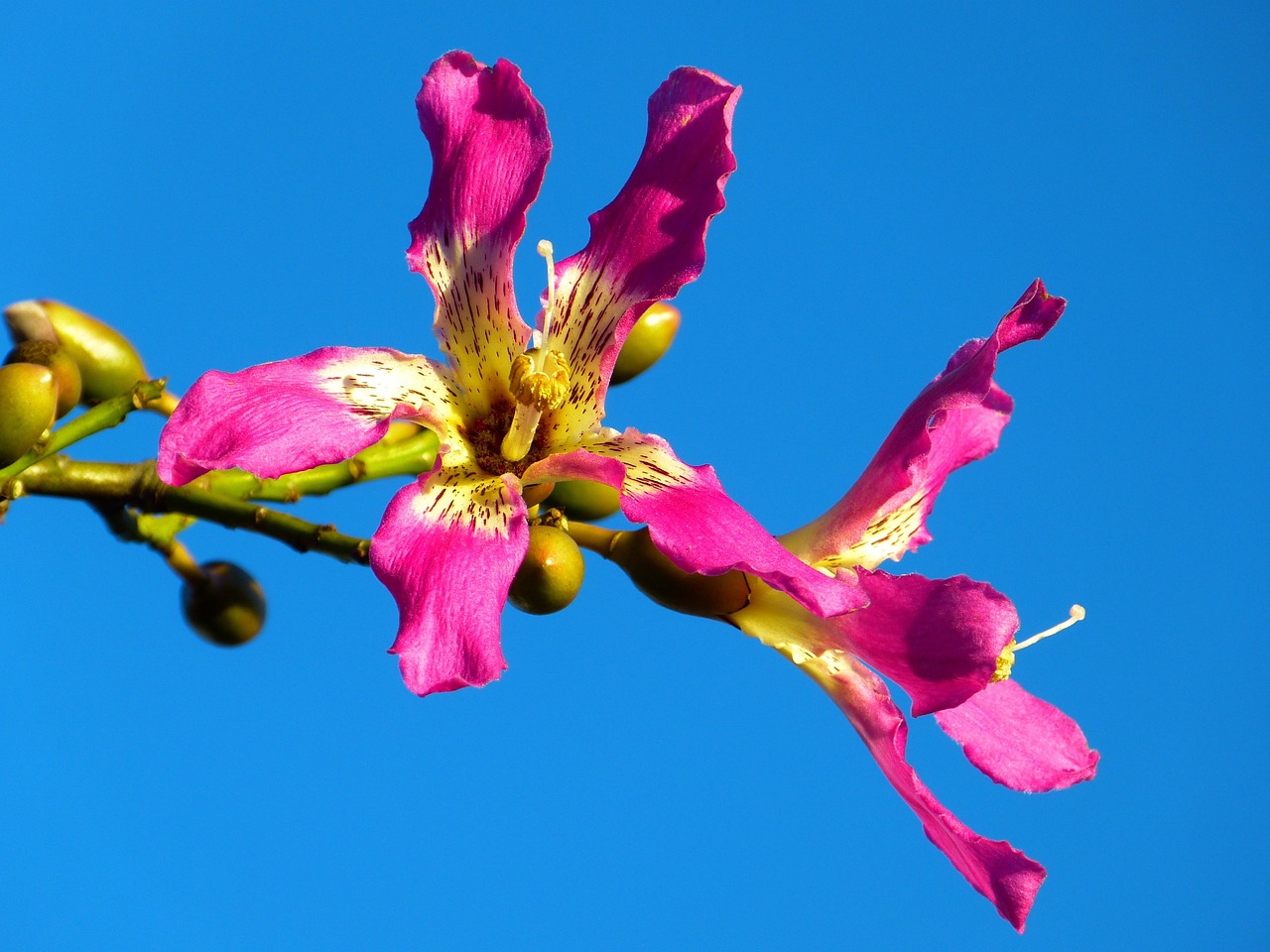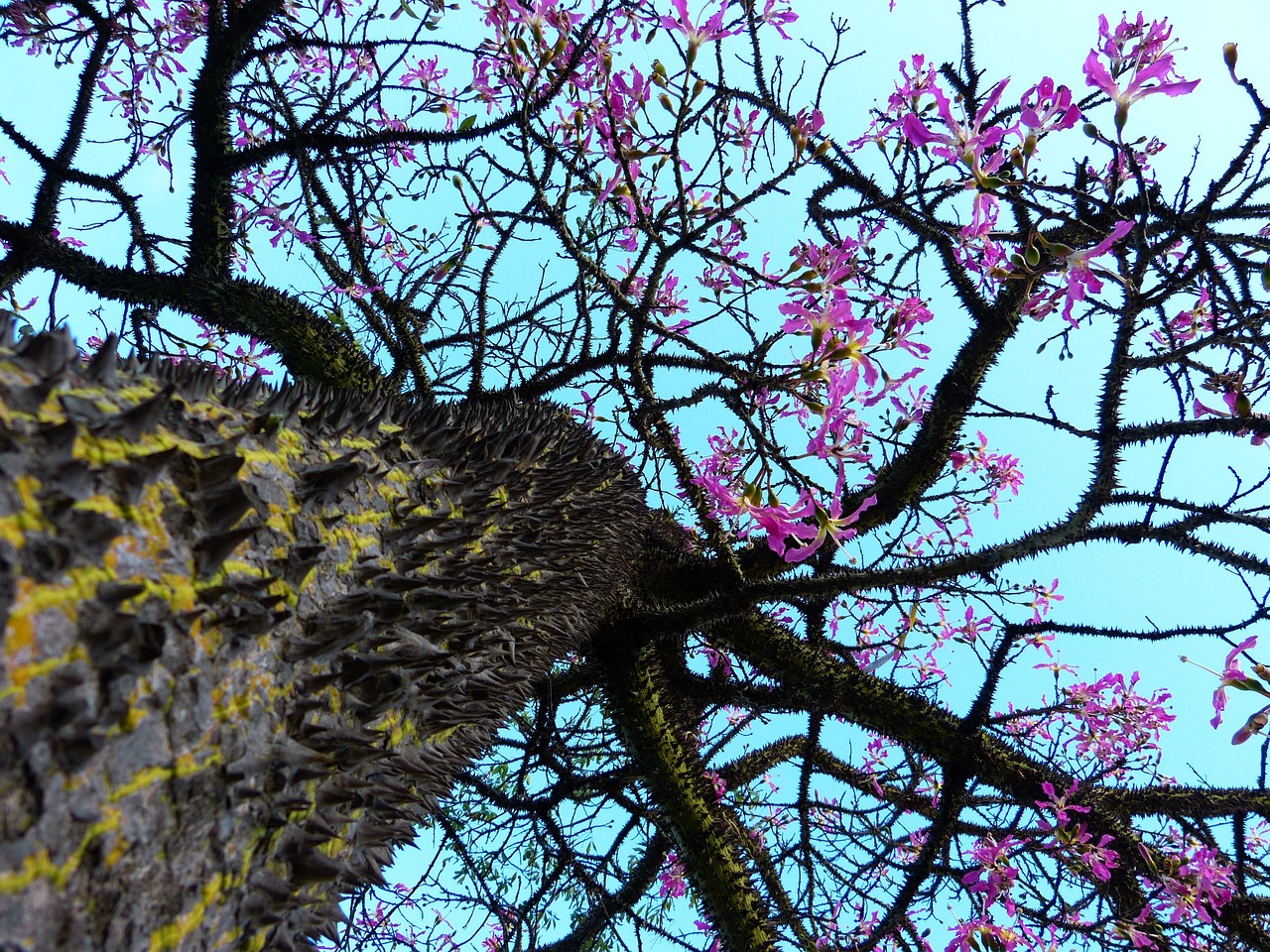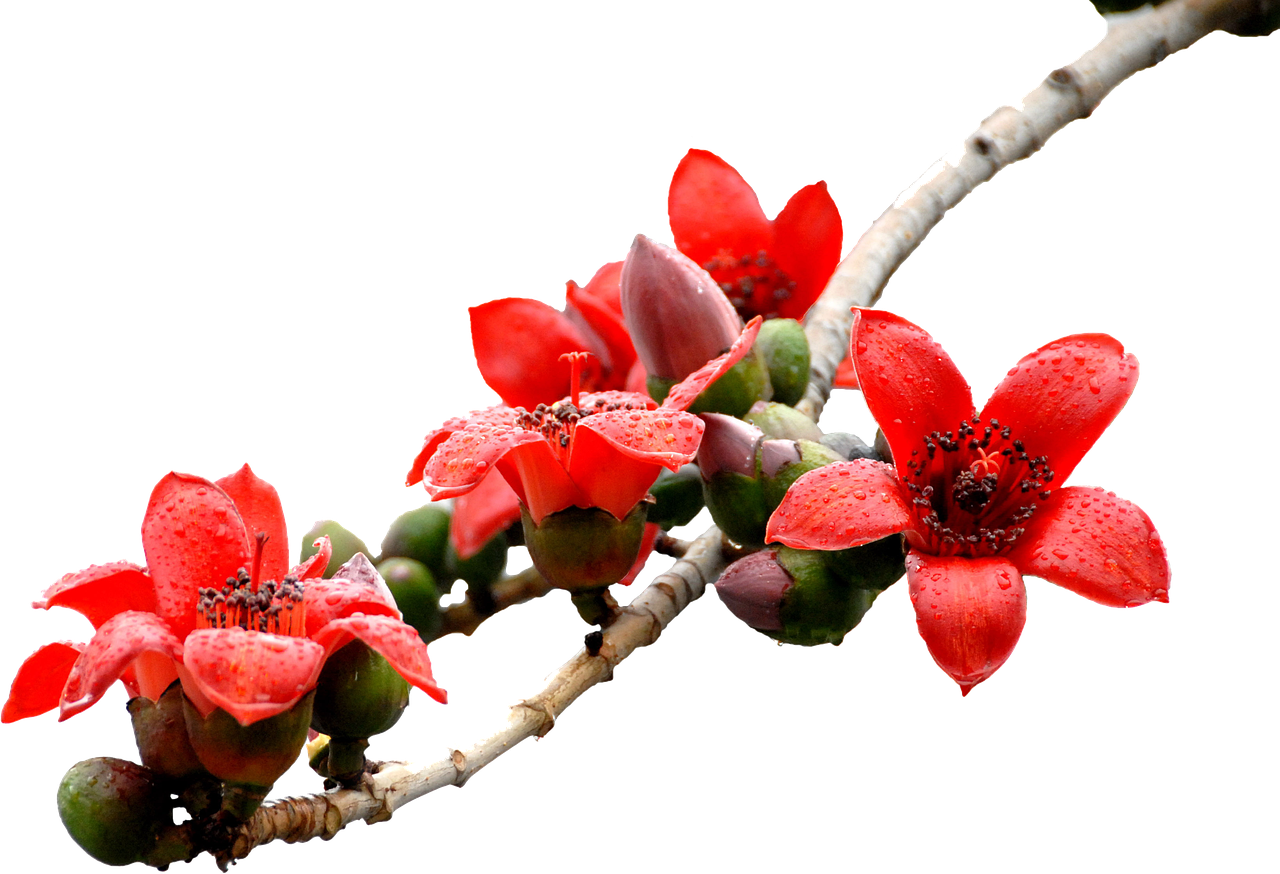The Kapok tree, known for its rapid growth, can reach heights of up to 150 feet in about 10 to 15 years. It grows quickly, making it an excellent source for fiber and providing ample shade in tropical regions.
The Kapok tree, scientifically referred to as Ceiba pentandra, is a majestic tropical tree native to Central and South America, as well as parts of Africa and Southeast Asia. Known for its towering height and impressive canopy, the Kapok tree has garnered attention not only for its aesthetic appeal but also for its practical uses. The fibers harvested from its seed pods are lightweight, buoyant, and highly sought after for various applications, including stuffing for pillows and life jackets. Additionally, its broad leaves provide significant shade, making it a popular choice for urban landscaping and reforestation projects.

Growth Characteristics of the Kapok Tree
The growth rate of the Kapok tree is one of its most remarkable features. Under ideal conditions, it can grow anywhere from 3 to 5 feet per year. This rapid growth is influenced by several factors including soil quality, water availability, and climatic conditions. The tree thrives in well-drained soils with high organic content and requires ample sunlight to maximize its growth potential.
In terms of height, the Kapok tree can reach impressive dimensions. It can grow up to 150 feet tall, with a trunk diameter of up to 5 feet. The tree typically develops a large, spreading canopy that can provide shade for areas beneath it. This makes it a valuable asset in both natural and urban environments.
Factors Influencing Growth Rate
Several environmental factors play a crucial role in determining the growth rate of the Kapok tree. Understanding these factors can help in cultivating these trees effectively.

- Soil Quality: Rich, well-drained soils enhance growth. Poor soil can stunt development.
- Water Availability: Regular rainfall or irrigation is vital. Drought conditions can hinder growth.
- Sunlight: Full exposure to sunlight accelerates growth rates significantly.
- Temperature: Warm temperatures are optimal, while frost can damage young trees.
The Kapok tree’s adaptability to different environments makes it suitable for various regions. However, it prefers tropical climates where temperatures remain warm throughout the year. In cooler climates, growth may be stunted or the tree may not survive at all.
Uses of Kapok Tree Fiber
The fiber harvested from Kapok trees has numerous practical applications. The lightweight nature of the fiber makes it an ideal material for various products. Here are some key uses:
- Pillows and Cushions
- Life Jackets and Floating Devices
- Insulation for Clothing
- Eco-Friendly Packaging Material
This fiber is not only beneficial in commercial products but also serves an ecological purpose by providing a sustainable alternative to synthetic materials. As awareness of environmental issues grows, the demand for natural fibers like those from the Kapok tree is increasing.

Shade Provision by Kapok Trees
One of the notable benefits of planting Kapok trees is their ability to provide shade. Their large canopies create cool spaces under their branches, which can be especially beneficial in hot climates. Some additional benefits include:
- Reduction in Urban Heat: Large trees help lower temperatures in urban areas, contributing to a more comfortable environment.
- Wildlife Habitat: The dense foliage offers shelter for various bird species and insects.
- Aesthetic Value: Their grandeur enhances landscape beauty and offers a natural focal point in parks and gardens.
The combination of rapid growth and significant shade provision makes the Kapok tree an excellent choice for reforestation and urban landscaping projects. Its ability to thrive quickly allows for immediate benefits to both the environment and local communities.
Propagation and Cultivation of Kapok Trees
To harness the benefits of the Kapok tree, understanding its propagation and cultivation is essential. This tree can be cultivated from seeds or cuttings, although seed propagation is the most common method used. The following sections outline the steps involved in successfully growing Kapok trees.

Seed Propagation
Growing Kapok trees from seeds is a straightforward process. Here are the steps involved:
- Seed Collection: Harvest the seeds from mature Kapok pods. The pods typically open when ripe, releasing the fluffy fibers that contain the seeds.
- Seed Preparation: Clean the seeds by removing any remaining fiber. This helps prevent fungal growth during germination.
- Soaking: Soak the seeds in water for 24 hours to enhance germination rates.
- Sowing: Plant the seeds in well-draining soil, burying them about 1 inch deep. Space the seeds at least 3 feet apart to allow for growth.
- Watering: Water the seeds regularly to keep the soil moist but not waterlogged. Use mulch to retain moisture.
Seeds typically germinate within two to three weeks under optimal conditions. Once seedlings develop a few sets of true leaves, they can be transplanted to their permanent locations.
Growing Conditions
The growth conditions significantly affect the rate and health of Kapok trees. Here are key factors that should be considered:
- Light: Kapok trees require full sunlight for optimal growth. They thrive in open areas where they can receive at least six hours of direct sunlight daily.
- Soil Type: Well-drained, fertile soils enriched with organic matter promote healthy growth. Sandy loam and clay loam soils are suitable options.
- Watering Needs: While young trees need consistent moisture, mature trees are more drought-resistant. However, regular watering during dry seasons will support better growth.
- Temperature: Kapok trees prefer warm temperatures, typically ranging from 70°F to 100°F. They do not tolerate frost and should be planted in warmer regions.
Pests and Diseases Affecting Kapok Trees
Like any other plant species, Kapok trees can be susceptible to various pests and diseases. Awareness of these threats can aid in maintaining healthy trees.
Common Pests
Pests that may infest Kapok trees include:
- Aphids: These small insects feed on sap, leading to weakened trees. Regular inspection can help catch infestations early.
- Caterpillars: Various caterpillar species may feed on leaves, causing defoliation. Handpicking can be effective in small infestations.
- Scale Insects: These pests can cover stems and leaves, impacting photosynthesis. Neem oil or insecticidal soap can effectively control them.
Diseases
Kapok trees may also suffer from certain diseases, including:
- Crown Rot: Caused by fungal pathogens, this disease affects the root system and can lead to tree decline. Ensuring proper drainage is crucial for prevention.
- Leaf Spot: Fungal infections can cause spots on leaves, often leading to premature leaf drop. Fungicidal treatments can help manage this issue.
Regular monitoring and early intervention are essential in managing pests and diseases effectively. Maintaining healthy growing conditions will also reduce the likelihood of these issues arising.
The Role of Kapok Trees in Ecosystems
The Kapok tree plays a vital role in its ecosystem beyond its commercial uses. Its presence contributes to biodiversity and environmental health in several ways.
- Carbon Sequestration: As a large tree, it absorbs significant amounts of carbon dioxide, helping mitigate climate change effects.
- Habitat Creation: The tree provides shelter and food for various wildlife species, including birds, bats, and insects.
- Soil Health Improvement: Fallen leaves and flowers decompose to enrich the soil, enhancing nutrient availability for surrounding plants.
The ecological benefits of Kapok trees underscore their importance in both natural and managed landscapes. Planting these trees contributes positively to environmental sustainability while providing resources for human use.
Economic Importance of Kapok Trees
The Kapok tree is not only significant from an ecological standpoint but also holds considerable economic value. Its fibers, wood, and other parts offer various opportunities for commercial exploitation. Understanding these economic aspects can highlight the importance of preserving and cultivating Kapok trees.
Fiber Production
The most well-known product derived from the Kapok tree is its fiber. This natural fiber is harvested from the seed pods and has several advantages:
- Lightweight and Buoyant: The fiber is known for its lightness and buoyancy, making it ideal for products like life jackets.
- Hypoallergenic: Unlike synthetic materials, Kapok fiber does not cause allergic reactions, making it suitable for bedding and pillows.
- Eco-Friendly: As a natural product, Kapok fiber is biodegradable, offering a sustainable alternative to synthetic stuffing materials.
Due to these characteristics, the demand for Kapok fiber has been increasing in various industries, including textiles and home furnishings.
Wood Utilization
The wood of the Kapok tree is another valuable resource. While it is not as dense as hardwoods, it has several applications:
- Construction: The lightweight nature of Kapok wood makes it suitable for temporary structures and furniture.
- Crafts and Carvings: Artisans often use Kapok wood for creating decorative items and sculptures due to its ease of carving.
- Pulp Production: The wood can also be processed into pulp for paper production.
Although Kapok wood is not as commercially popular as other hardwoods, it still contributes to local economies where the tree is cultivated.
Cultural Significance of Kapok Trees
The Kapok tree carries cultural significance in many regions where it grows. It is often intertwined with local traditions and beliefs.
Symbolism in Various Cultures
In many cultures, the Kapok tree is regarded as a symbol of strength and longevity. Some cultural beliefs associated with the tree include:
- Spiritual Significance: Many indigenous communities view the Kapok tree as sacred. It is often used in rituals and ceremonies.
- Community Gathering Places: The large canopy provides shade, making it a natural gathering spot for community events.
- Folklore: Stories and legends about the Kapok tree are common in various cultures, often emphasizing its majestic presence and life-giving qualities.
Traditional Uses
Beyond symbolism, the Kapok tree has traditional uses that vary by region. Some notable uses include:
- Medicinal Applications: In some cultures, parts of the Kapok tree are used in traditional medicine to treat ailments like inflammation and digestive issues.
- Crafting Materials: Local artisans may use the bark and branches for crafting baskets or other handmade items.
- Food Source: The flowers of the Kapok tree are sometimes consumed or used in teas, adding nutritional value to local diets.
Sustainability Practices in Kapok Tree Cultivation
Sustainable practices in cultivating Kapok trees ensure that their economic benefits do not come at the expense of environmental health. Implementing these practices can enhance both profitability and sustainability.
Agroforestry Systems
Integrating Kapok trees into agroforestry systems can maximize land usage. This practice involves:
- Diverse Planting: Growing Kapok trees alongside crops or other trees can enhance biodiversity and improve soil fertility.
- Shade Provision: The canopy of Kapok trees can provide shade for understory crops, reducing water evaporation and improving yields.
- Erosion Control: The extensive root system of Kapok trees helps prevent soil erosion, maintaining land integrity.
Organic Farming Practices
Using organic farming methods while cultivating Kapok trees can enhance their sustainability:
- No Chemical Fertilizers: Relying on natural compost and organic amendments improves soil health without harming ecosystems.
- Pest Management: Natural pest control methods can reduce pesticide usage, supporting wildlife and maintaining ecological balance.
The combination of cultural significance, economic value, and sustainable practices positions the Kapok tree as a vital component of both local economies and ecosystems. Its multifaceted roles highlight the need for continued interest in its cultivation and preservation.
Future Prospects for Kapok Trees
The future of Kapok trees is promising, given their numerous benefits and adaptability. As awareness of environmental sustainability grows, the demand for natural fibers and eco-friendly products continues to rise. This trend highlights the potential for increased cultivation of Kapok trees in various regions.
Innovations in Fiber Processing
Advancements in technology can improve the processing of Kapok fiber, making it more competitive with synthetic alternatives. Innovations may include:
- Improved Extraction Techniques: New methods for extracting fiber from seed pods can enhance yield and quality.
- Value-Added Products: Developing products that utilize Kapok fiber in new ways can expand market opportunities.
- Eco-Friendly Manufacturing: Sustainable practices in manufacturing can appeal to environmentally conscious consumers.
As these innovations emerge, they may lead to a resurgence in the use of Kapok fiber across various industries, including textiles, construction, and insulation.
Increased Interest in Agroforestry
The growing interest in agroforestry practices means that more farmers may consider integrating Kapok trees into their agricultural systems. Benefits of such integration include:
- Diversity in Production: Farmers can diversify their income sources by combining crop production with timber and fiber harvesting.
- Resilience to Climate Change: Agroforestry systems can enhance resilience against climate extremes by improving soil health and water retention.
- Community Engagement: Promoting agroforestry can foster community involvement and education about sustainable practices.
The integration of Kapok trees into agroforestry systems can create a more sustainable agricultural landscape, benefiting both farmers and the environment.
Research and Conservation Efforts
Ongoing research into the ecological and economic roles of Kapok trees is crucial for their conservation. Efforts may include:
- Biodiversity Studies: Understanding the interactions between Kapok trees and other species can aid in ecosystem conservation.
- Genetic Research: Investigating the genetic diversity of Kapok populations can help identify resilient varieties suitable for cultivation.
- Community-Based Conservation: Engaging local communities in conservation efforts ensures sustainable practices are upheld.
These research initiatives will provide valuable insights to guide the sustainable management and conservation of Kapok trees, ensuring their longevity and continued contribution to ecosystems and economies.
Final Thoughts
The Kapok tree represents a unique intersection of ecological, economic, and cultural significance. With its rapid growth rate, it serves as an excellent source of fiber and shade, while also playing a vital role in local ecosystems. The versatility of Kapok trees makes them invaluable assets in agricultural practices, urban landscapes, and conservation efforts.
As global awareness of environmental issues grows, the appeal of sustainable resources like Kapok fiber is likely to increase. With advancements in cultivation methods, processing technologies, and agroforestry systems, the future looks bright for the Kapok tree. It is essential for communities, researchers, and policymakers to collaborate on promoting the sustainable use and conservation of this remarkable tree.
By embracing the potential of the Kapok tree, we can not only enhance biodiversity and improve local economies but also contribute positively to global environmental goals. The ongoing journey toward sustainable living requires a multifaceted approach where the Kapok tree stands out as a symbol of growth, resilience, and hope for a greener future.
